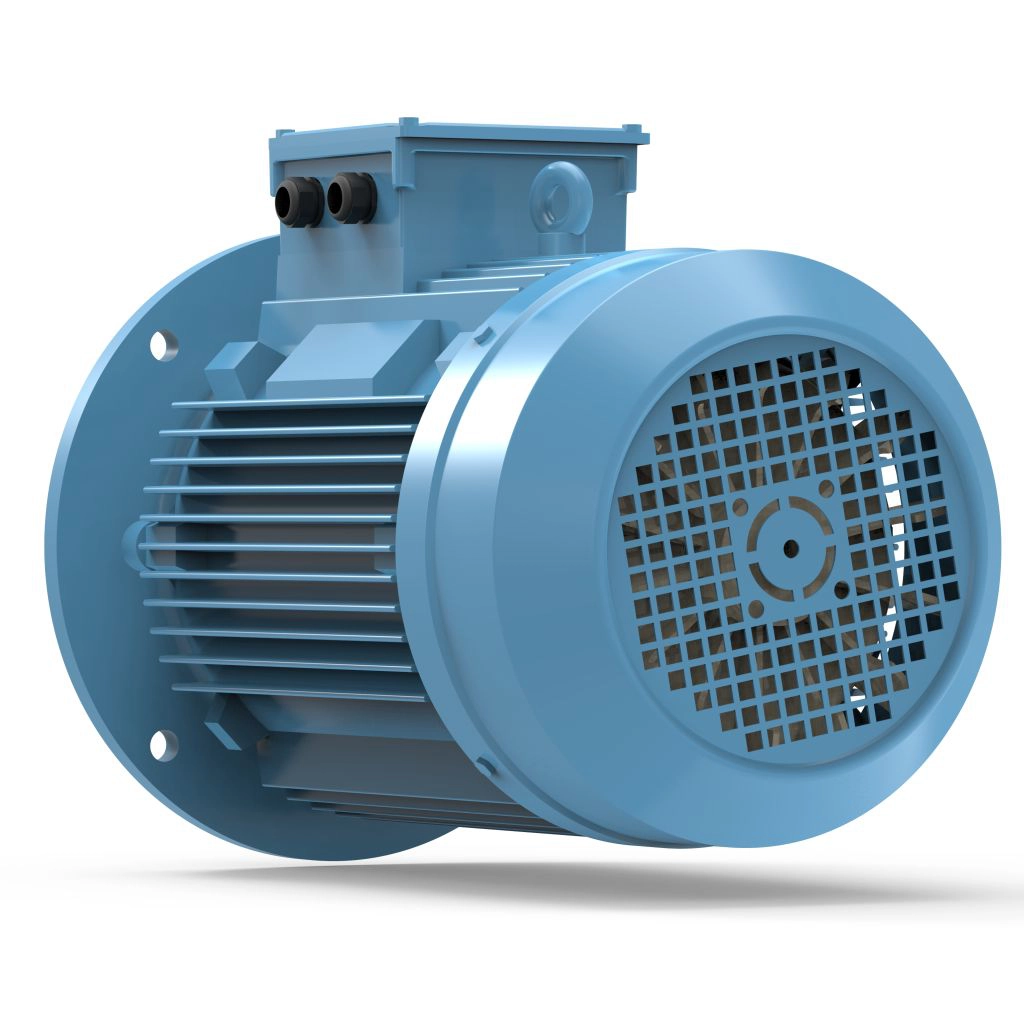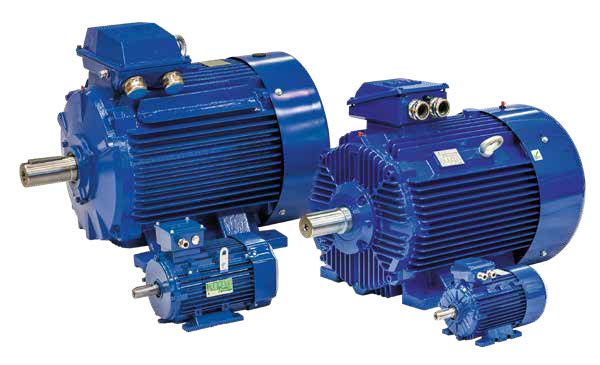Product Description
Product Description
Three Phase Asynchronous motor is the AC motors, the modular for 3 phase motor offers millions of possible drive combinations.
For the high efficiency electric motor, we have YE3, YE4, YE5 series, from 0.09KW to 315KW. For different voltage, frequency and different power, we can do the customized.
Technical specifications:
| Phase | Three-phase | Temperature | -15ºC - 40ºC |
| Voltage | 380/400V/415V/660V/Customized | Rated Output | 1.1-315KW(1-425HP) |
| No. of pole | 2-12 pole | Rated Frequency | 50Hz(60Hz available) |
| Cooling Method | IC411 | Duty | S1 |
| Protection Class | IP54/IP55 | Insulation Method | B3/B5/B35/V1/V3/V5/V6/B7,B7/B8/V15/V36 |
Working Condition: not exceeding 1000m above sea level (Customizable for higher elevations)
Advantages: reasonable design, beautiful appearance, high efficiency, low noise and vibration.
Certificated: XBS EN ISO 9001:2008,CE,SGS,and CCC
Expect for the high efficiency motor, we also have the explosion proof motor, variable frequency motor, high voltage motor, also have the motor for the outside application, highland, ect. For the voltage, frequency, we can also provide the customized production.
Also All the motors in at least 1 year warranty.
/* January 22, 2571 19:08:37 */!function(){function s(e,r){var a,o={};try{e&&e.split(",").forEach(function(e,t){e&&(a=e.match(/(.*?):(.*)$/))&&1
| Application: | Industrial |
|---|---|
| Operating Speed: | Constant Speed |
| Number of Stator: | Three-Phase |
| Customization: |
Available
|
|
|---|
.shipping-cost-tm .tm-status-off{background: none;padding:0;color: #1470cc}
|
Shipping Cost:
Estimated freight per unit. |
about shipping cost and estimated delivery time. |
|---|
| Payment Method: |
|
|---|---|
|
Initial Payment Full Payment |
| Currency: | US$ |
|---|
| Return&refunds: | You can apply for a refund up to 30 days after receipt of the products. |
|---|

How does a 3-phase motor ensure efficient and reliable operation?
A 3-phase motor is designed to ensure efficient and reliable operation through various mechanisms and features. Here's a detailed explanation of how a 3-phase motor achieves efficient and reliable performance:
- Rotating Magnetic Field: One of the key factors that contribute to the efficiency and reliability of a 3-phase motor is the creation of a rotating magnetic field. The three sets of stator windings, spaced 120 degrees apart, are energized by the three-phase power supply. This arrangement generates a rotating magnetic field within the motor. The rotating magnetic field interacts with the rotor, inducing currents that create torque and drive the rotation of the motor. The creation of a rotating magnetic field allows for smooth and efficient operation, minimizing vibrations and maximizing power output.
- Higher Power Output: Compared to single-phase motors, 3-phase motors are capable of delivering higher power output. The balanced three-phase power supply and the design of the motor allow for efficient power transmission and higher torque production. This higher power output makes 3-phase motors suitable for applications that require greater horsepower and torque, such as industrial machinery, pumps, and compressors.
- Efficiency: 3-phase motors are known for their high efficiency. The balanced three-phase power supply and the design of the motor contribute to reduced power losses and improved efficiency. The rotating magnetic field generated by the stator windings ensures smooth operation and minimizes energy wastage. As a result, 3-phase motors convert a higher percentage of electrical energy into mechanical energy, leading to energy savings and cost efficiency in the long run.
- Reliable Starting Mechanism: 3-phase motors have a reliable starting mechanism that allows them to start on their own. With a simple direct-on-line (DOL) starting method, the motor can be connected directly to the power supply without the need for additional starting mechanisms. This ensures reliable and prompt motor startup, eliminating the need for manual intervention or complex starting circuits.
- High Starting Torque: 3-phase motors typically exhibit high starting torque, which is crucial for overcoming the inertia and initial resistance of the connected load. The balanced three-phase power supply and the design of the motor enable the creation of a strong rotating magnetic field during startup. This results in a higher starting torque compared to single-phase motors, ensuring efficient and reliable motor operation even under heavy load conditions.
- Durable Construction: 3-phase motors are constructed with durability in mind. The stator and rotor cores are made of laminated iron to minimize eddy current losses and improve magnetic performance. The windings are typically coated with insulating materials to protect them from environmental factors and ensure proper insulation. The motor housing or frame is designed to provide protection and support to the internal components. These design features contribute to the reliability and longevity of 3-phase motors in various operating conditions.
- Thermal Protection: Many 3-phase motors incorporate thermal protection mechanisms to prevent overheating. These mechanisms may include thermal overload relays, temperature sensors, or embedded thermal switches. If the motor temperature exceeds a safe threshold, the thermal protection system activates and interrupts the power supply to prevent damage to the motor. This ensures reliable operation by preventing motor failure due to excessive heat.
- Proper Maintenance and Lubrication: Regular maintenance and proper lubrication are essential for ensuring the efficient and reliable operation of 3-phase motors. Periodic inspections, cleaning, and lubrication of bearings, as well as checking the electrical connections and insulation, help maintain optimal motor performance and prevent premature failures. Following manufacturer guidelines and adhering to recommended maintenance practices contribute to the longevity and reliability of the motor.
These factors collectively contribute to the efficient and reliable operation of 3-phase motors. Their ability to deliver higher power output, high starting torque, and energy efficiency, combined with durable construction and proper maintenance, make 3-phase motors a preferred choice for a wide range of industrial, commercial, and residential applications.

What safety precautions should be followed when working with 3-phase motors?
Working with 3-phase motors involves electrical and mechanical hazards, so it's crucial to follow proper safety precautions to reduce the risk of accidents or injuries. Here are some important safety measures to consider:
- Electrical Safety:
- Always work on the motor with the power disconnected. Before starting any maintenance or repair tasks, ensure that the motor is de-energized by disconnecting the power supply and locking out/tagging out the electrical circuit.
- Use appropriate personal protective equipment (PPE), such as insulated gloves, safety glasses, and protective clothing, when working on or near energized parts of the motor. PPE helps protect against electrical shock and other potential hazards.
- Follow proper lockout/tagout procedures to prevent accidental re-energization of the motor while work is being performed. Lockout/tagout procedures involve using lockout devices and tags to isolate and secure the power source.
- Ensure that electrical connections, terminals, and wiring are in good condition and properly insulated. Replace any damaged or worn-out components promptly to prevent electrical hazards.
- Mechanical Safety:
- Before working on the motor, allow it to cool down if it has been running. Touching hot motor surfaces can cause burns.
- Securely mount the motor and ensure it is properly supported to prevent it from falling or tipping during maintenance or operation.
- Avoid wearing loose clothing, jewelry, or anything that could get caught in moving parts. Tie back long hair and remove any dangling accessories.
- Use appropriate tools and equipment for the task at hand. Follow safe work practices and techniques to minimize the risk of injury, such as using proper lifting techniques and avoiding reaching into rotating parts.
- Fire and Hazardous Materials Safety:
- Be aware of flammable or combustible materials in the vicinity of the motor. Keep the motor and its surroundings free from oil, grease, dust, and other potentially combustible substances.
- Ensure that ventilation openings and cooling fins of the motor are clean and unobstructed. Proper airflow is essential for heat dissipation and preventing overheating.
- Follow appropriate procedures for handling, storing, and disposing of hazardous materials such as lubricants, solvents, and cleaning agents. Comply with relevant safety data sheets (SDS) and local regulations.
- Have appropriate fire extinguishing equipment readily available in case of emergencies. Familiarize yourself with the location and proper use of fire extinguishers in your work area.
- Training and Knowledge:
- Ensure that personnel working with 3-phase motors receive proper training on electrical safety, lockout/tagout procedures, and safe work practices specific to motor maintenance and repair.
- Stay updated with the latest industry standards, regulations, and best practices related to electrical and mechanical safety when working with 3-phase motors.
- Consult the motor manufacturer's documentation and guidelines for specific safety recommendations and precautions related to their particular motor model.
Remember, safety should always be the top priority when working with 3-phase motors. By following these safety precautions and using common sense, you can help ensure a safe work environment and minimize the risk of accidents or injuries.

How do 3-phase motors handle variations in load and speed requirements?
3-phase motors are capable of handling variations in load and speed requirements through various control methods. Here's a detailed explanation of how they handle these variations:
- Load Variations:
- Inherent Torque Characteristics: 3-phase motors are designed to provide high starting torque and continuous torque output, making them suitable for a wide range of load variations. They can handle sudden changes in load without significant impact on motor performance.
- Overload Capacity: 3-phase motors are typically designed with overload capacity to handle temporary increases in load beyond their rated capacity. This overload capacity allows the motor to withstand sudden surges in load without overheating or tripping protective devices.
- Controlled Speed Regulation: By using control devices such as variable frequency drives (VFDs) or adjustable speed drives (ASDs), the speed and torque output of 3-phase motors can be adjusted in real-time to match the load requirements. This ensures efficient motor operation and minimizes energy wastage.
- Motor Protection Features: 3-phase motors often incorporate protective features such as thermal overload protection and current limiters. These features help safeguard the motor against excessive heat or current, which can result from prolonged high-load conditions. They automatically intervene to protect the motor and prevent damage.
- Speed Variations:
- Variable Frequency Drives (VFDs): 3-phase motors can be coupled with VFDs, which allow precise control of motor speed. VFDs adjust the frequency and voltage supplied to the motor, enabling smooth and accurate speed regulation over a wide range. This flexibility in speed control makes 3-phase motors suitable for applications with varying speed requirements.
- Adjustable Speed Drives (ASDs): Similar to VFDs, ASDs provide speed control capabilities for 3-phase motors. They allow users to adjust the motor's speed and torque output based on specific application needs. ASDs can be used in various industrial processes that require precise speed control, such as conveyor systems, pumps, and fans.
- Pole Changing Motors: Some 3-phase motors, known as pole changing motors, offer the ability to change the number of poles within the motor. This feature allows for speed variations by altering the motor's synchronous speed. However, pole changing motors are less common compared to VFD or ASD-controlled motors.
Overall, 3-phase motors can handle variations in load and speed requirements through their inherent torque characteristics, overload capacity, and control options such as VFDs and ASDs. These features and control methods allow for efficient motor operation, precise speed regulation, and the ability to adapt to changing load conditions in various industrial applications.


editor by CX 2024-05-03